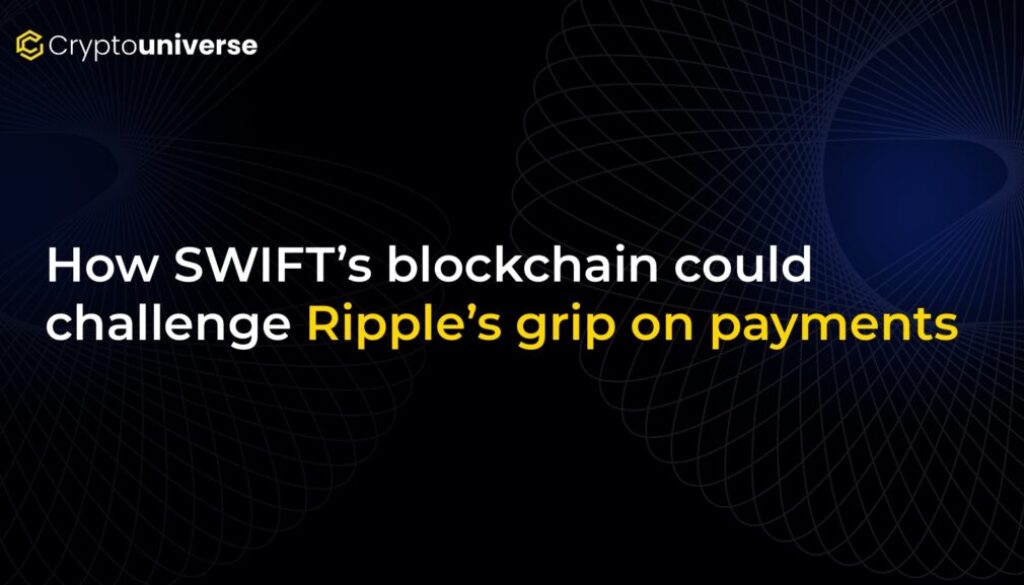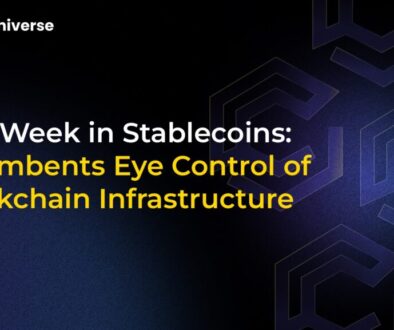How SWIFT’s blockchain could challenge Ripple’s grip on payments

The Trillion-Dollar Battleground for Global Payments
Every year, trillions of dollars flow across borders, powering global trade, remittances, and commerce. For decades, one name has dominated this landscape: SWIFT (Society for Worldwide Interbank Financial Telecommunication). But a new challenger, Ripple, emerged with blockchain technology, promising to make cross-border payments faster, cheaper, and more efficient using its native token, XRP.
For years, this was a classic story of an incumbent giant versus a disruptive upstart. SWIFT’s network was massive but slow; Ripple was agile but fighting for adoption. Now, the dynamic is shifting. SWIFT is no longer just playing defense. It’s building its own blockchain-based shared ledger, aiming to compete directly with Ripple on its own turf. This article explores SWIFT’s ambitious plan, the challenges it faces, and whether it can truly loosen Ripple’s growing grip on the future of payments.
Who is SWIFT? The Bedrock of Global Banking
To understand the magnitude of this shift, it’s essential to know what SWIFT does. Contrary to popular belief, SWIFT doesn’t actually move money. Instead, it operates a highly secure and standardized messaging network that allows over 11,000 financial institutions across 200+ countries to send and receive payment instructions.
When you send money internationally, your bank uses SWIFT to send a secure message—like a digital telegram—to the recipient’s bank. This message contains all the necessary details, from account numbers to transaction amounts, ensuring the funds arrive at the right destination. Since its founding in 1973, SWIFT has been the trusted backbone of international finance, replacing the slow and error-prone Telex system.
Did you know? SWIFT was founded by 239 banks from 15 countries to create a universal standard for financial messaging, a role it continues to fulfill today.
Enter Ripple: The Blockchain-Powered Challenger
While SWIFT standardized communication, it didn’t solve the core inefficiencies of cross-border payments, which often take 1-5 business days and involve high fees due to multiple intermediary banks. This is where Ripple saw an opportunity.
Ripple leverages the XRP Ledger, a decentralized blockchain, and its native asset, XRP, to facilitate near-instantaneous and low-cost international payments. Its flagship service, On-Demand Liquidity (ODL), uses XRP as a bridge currency, eliminating the need for banks to pre-fund accounts in foreign currencies. This dramatically cuts costs and settles transactions in just 3-5 seconds.
Ripple’s technology has seen real-world adoption:
- Remittances: Companies like SBI Remit in Japan and Pyypl in the Middle East use ODL to process remittances to countries like the Philippines, Vietnam, and Indonesia, serving both banked and unbanked populations.
- Expanding Use Cases: Beyond payments, XRP is being explored for tokenized loyalty programs and DeFi applications. For example, institutions like SBI Holdings not only invest in Ripple but integrate XRP across their subsidiaries.
SWIFT’s Counter-Attack: A New Shared Ledger
Facing growing pressure from blockchain innovators, SWIFT is now building its own blockchain solution in collaboration with Consensys. This project isn’t about replacing its core messaging system but enhancing it for the digital asset era.
Key features of SWIFT’s blockchain initiative include:
- Interoperability: The system is designed to connect different public and private blockchains, allowing for the seamless transfer of tokenized assets across networks.
- Support for Regulated Assets: It will handle regulated digital assets like stablecoins and, potentially, central bank digital currencies (CBDCs), positioning SWIFT as a central hub for the future of tokenized finance.
- Integration, Not Replacement: By designing the ledger to work with existing banking infrastructure, SWIFT aims to lower the barrier to adoption for its thousands of member institutions.
This strategic move is designed to keep banks within the SWIFT ecosystem as the financial world transitions toward tokenization, directly challenging the value proposition offered by networks like Ripple.
Head-to-Head: Can SWIFT’s Blockchain Outmaneuver Ripple?
The competition between these two giants will be defined by their unique strengths and weaknesses.
SWIFT’s Advantages:
The Network Effect: SWIFT’s greatest strength is its unparalleled network. With virtually every major financial institution already connected, adopting its new blockchain solution is a much smaller leap for banks than migrating to an entirely new network like Ripple.
Trust and Neutrality: As a long-established and trusted industry cooperative, SWIFT holds a position of authority. Its new ledger is designed to be asset-agnostic, supporting a wide range of tokens. This flexibility could be more appealing to conservative institutions than Ripple’s model, which is built around the XRP token.
Ripple’s Advantages:
Technological Head Start: Ripple has been developing and refining its payment technology for years. Its ODL system is a proven, live solution that already delivers significant speed and cost benefits.
Liquidity and Efficiency: Ripple’s core focus is solving the liquidity problem in cross-border payments. For SWIFT to match the efficiency of ODL, it will need to develop a similarly effective liquidity solution for its multi-asset ledger, which remains a significant challenge.
Hurdles on the Horizon
Neither path is without obstacles. For SWIFT, the primary challenge is technical and bureaucratic. Integrating a modern distributed ledger with decades-old legacy banking systems without causing disruption is a monumental task. Furthermore, navigating the complex and varied regulatory landscape for digital assets across hundreds of countries will be a slow, painstaking process.
For Ripple, the main hurdle remains institutional inertia. Convincing large banks to move away from the trusted, albeit slow, SWIFT system and embrace a new model built on a cryptocurrency is a continuous battle. SWIFT’s entry into the blockchain space could make that challenge even greater.
The Future of Global Payments: Coexistence or Conquest?
The rivalry between SWIFT and Ripple is set to reshape the future of international finance. It’s unlikely to be a zero-sum game. A probable scenario is coexistence, where SWIFT leverages its network to dominate the regulated, institution-to-institution transfer of tokenized securities and stablecoins, while Ripple continues to carve out a niche in remittances and emerging markets where speed and low costs are paramount.
Ultimately, this competition is a win for everyone else. It will accelerate innovation, push institutions to adopt more efficient technologies, and lead to faster, cheaper, and more accessible financial services globally. The final outcome won’t be determined by technology alone, but by a combination of network momentum, institutional trust, and alignment with the evolving rules of global finance.


